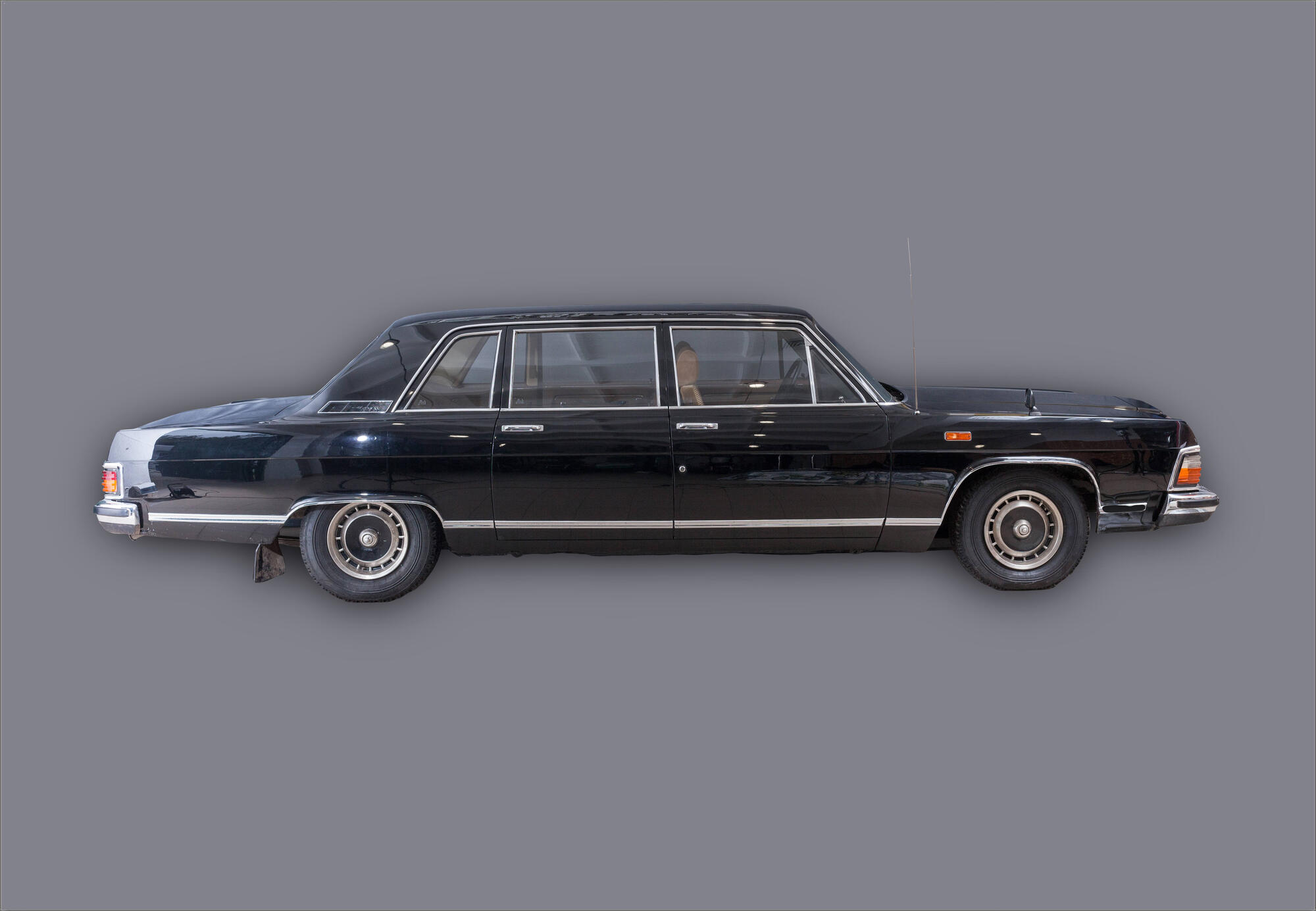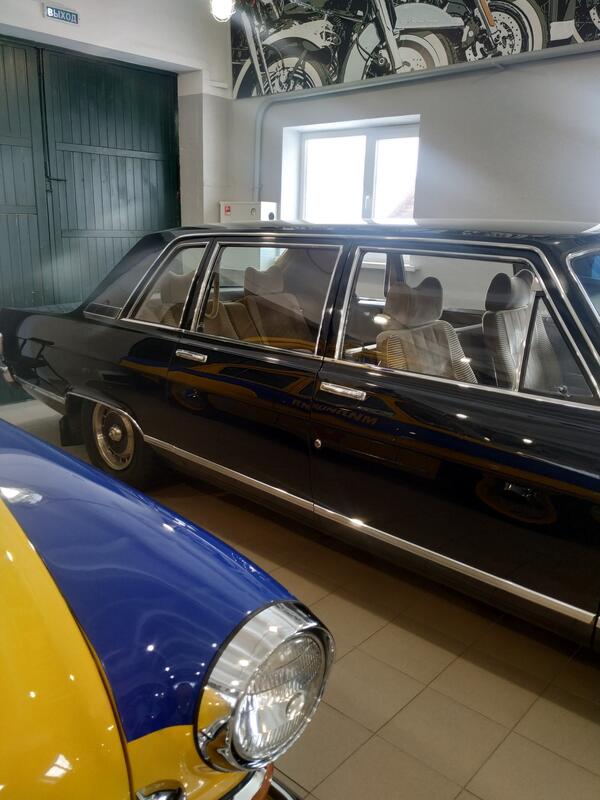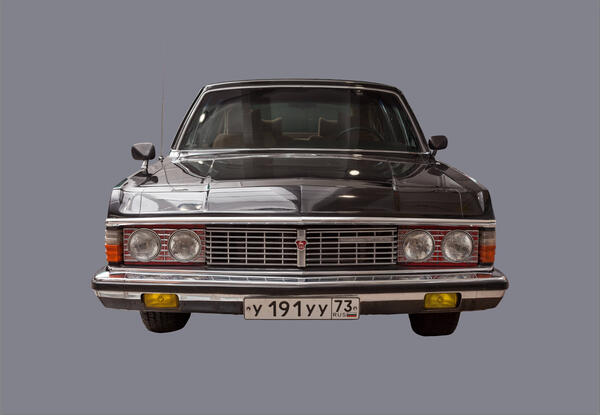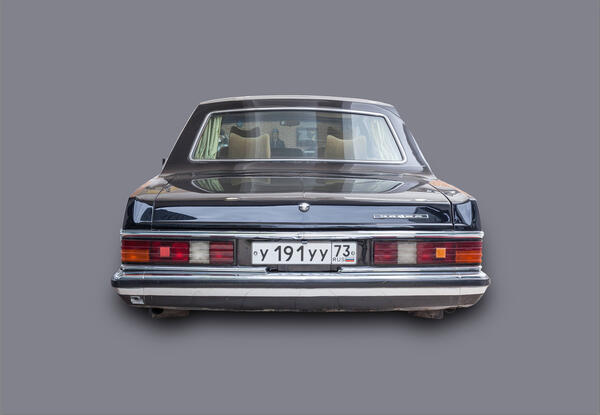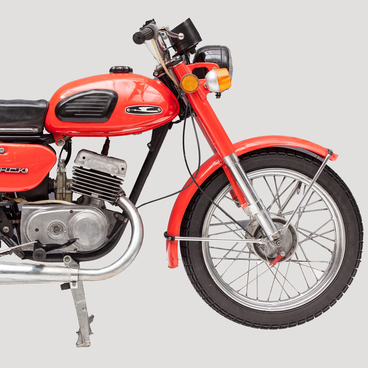The GAZ-14 Chaika was manufactured by the Gorky Automobile Plant which was constructed in 1932. During the Great Patriotic War, the production reoriented from light-duty vehicles, buses, and trucks to T-60 and T-70 tanks. The plant was repeatedly bombed but did not cease operations.
After the end of the war, the plant once again started manufacturing civilian vehicles. It assembled such cars as the GAZ-51, the GAZ-M20 Pobeda, the GAZ-21 Volga, and the luxurious limousine GAZ-13 Chaika. The Chaika was inspired by the interest in the cars produced in the United States in the 1950s. It had a tailfin style that was typical of many American automobiles.
The GAZ-13 was succeeded by the high-class light-duty vehicle GAZ-14. It was hand-built at the Gorky Automobile Plant between 1977 and 1988. This model was also heavily influenced by the American automotive industry.
During that time, the fashion was characterized by angular shapes instead of rounded and smooth lines, and Soviet designers took it into account. The development of the new model began in the late 1960s, but the first series was only produced in 1977.
Although the production was launched with a delay, the appearance of the car still looked modern. Due to the 1970s energy crisis in the United States, design developments slowed down.
Compared to the earlier GAZ-13 Chaika, the new model had a wider wheelbase and a lower drag coefficient. The engineers updated the engine, gearbox, and rear axle, and introduced numerous minor innovations.
The car was produced in small batches for eleven years until it was discontinued upon the order received directly from Mikhail Gorbachev. All the documents and drawings were destroyed. The car entered the museum collection from the fleet of the Ulyanovsk Region government.
On the day when the exhibition “A Soviet Garage. Retro Motorcycles” was opened, Sergey Morozov, the governor of the Ulyanovsk Region, announced the donation of this high-class limousine to the museum. Apart from him, this car had been used for receiving honorary guests by his predecessors Vladimir Shamanov and Yury Goryachev.
After the end of the war, the plant once again started manufacturing civilian vehicles. It assembled such cars as the GAZ-51, the GAZ-M20 Pobeda, the GAZ-21 Volga, and the luxurious limousine GAZ-13 Chaika. The Chaika was inspired by the interest in the cars produced in the United States in the 1950s. It had a tailfin style that was typical of many American automobiles.
The GAZ-13 was succeeded by the high-class light-duty vehicle GAZ-14. It was hand-built at the Gorky Automobile Plant between 1977 and 1988. This model was also heavily influenced by the American automotive industry.
During that time, the fashion was characterized by angular shapes instead of rounded and smooth lines, and Soviet designers took it into account. The development of the new model began in the late 1960s, but the first series was only produced in 1977.
Although the production was launched with a delay, the appearance of the car still looked modern. Due to the 1970s energy crisis in the United States, design developments slowed down.
Compared to the earlier GAZ-13 Chaika, the new model had a wider wheelbase and a lower drag coefficient. The engineers updated the engine, gearbox, and rear axle, and introduced numerous minor innovations.
The car was produced in small batches for eleven years until it was discontinued upon the order received directly from Mikhail Gorbachev. All the documents and drawings were destroyed. The car entered the museum collection from the fleet of the Ulyanovsk Region government.
On the day when the exhibition “A Soviet Garage. Retro Motorcycles” was opened, Sergey Morozov, the governor of the Ulyanovsk Region, announced the donation of this high-class limousine to the museum. Apart from him, this car had been used for receiving honorary guests by his predecessors Vladimir Shamanov and Yury Goryachev.
